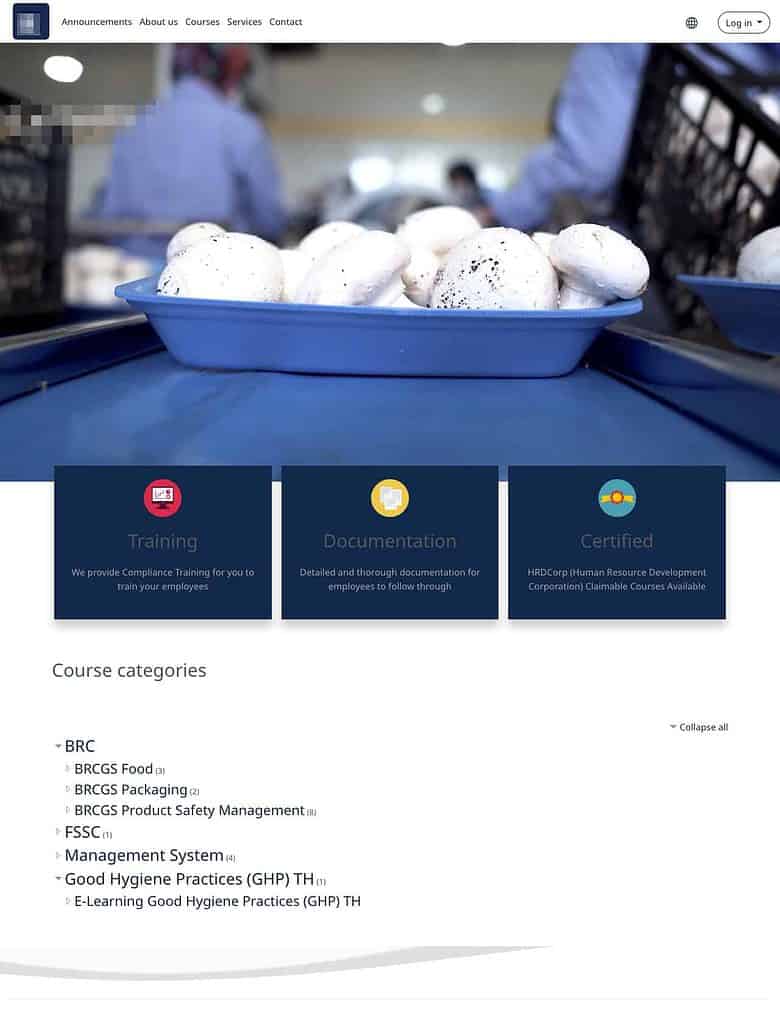Selling your eLearning courses has never been easier. ELearning has seen a massive surge in popularity since the pandemic began in 2020. That’s why it can pay to sell access to your eLearning courses to the public. However, you need to make sure you have a good LMS in place for it to work.
Pukunui has helped several clients profit from selling their courses online. Here are a couple of case studies that showcase how we did that.
Why sell access to your Moodle eLearning courses?
There are several reasons why an organization might choose to sell their Moodle eLearning courses.
First, selling eLearning courses can generate additional revenue for the organization. Elearning courses can be sold to a broad audience, including individuals, businesses, and other organizations, providing a potential source of income.
Second, selling eLearning courses can help promote the organization and its expertise. By making e-learning courses available for purchase, the organization can showcase its knowledge and experience in a particular subject area. This can help establish the organization as a leader in its field and attract new customers or clients.
Third, selling eLearning courses can help the organization reach a wider audience and expand its reach. By making e-learning courses available for purchase, the organization can reach learners who may not have been able to access its training programs otherwise, such as learners who are located remotely or have busy schedules.
Setting up to sell your courses via WordPress
Client ‘A’ delivers face-to-face courses that help ex-pat women in Malaysia find employment. They run various classes on CV writing, interview technique, and setting up companies.
The managing director approached us for a quality e-learning site and a website revamp. Ultimately, she wanted to take their classes to the next level and run blended learning sessions, face-to-face sessions, and fully online courses for their clients.
However, at the time, they were frustrated with their old Drupal-based website, which was ‘locked down’. Any changes they wanted to make had to be completed by the hosting company, and they didn’t have the admin access they needed.
The first thing we did was to set up a modern-looking WordPress website, customise it to fit their branding and run some WordPress training for them.
All our client sites come with full admin access. That way, they could create most of the content themselves, turning to us from time to time for technical support.
The next part involved setting up a Moodle site. We decided to use the popular Moodle theme Enlightlite, again with some customisation to fit their branding.
Lastly, we set up an integration between the two sites so that users could purchase courses on the WordPress site, via WooCommerce and be automatically enrolled on to their Moodle courses, with Moodle accounts created and signed into the Moodle site.
The whole project was completed in around two weeks, and the team said it gave their business a real boost.
LinkedIn Integration
To sell access to their courses, Client ‘B’ needed to reach two distinct markets: individuals who followed the company on LinkedIn and corporate HR staff from various companies.
To meet these needs, Pukunui implemented two separate authentication methods. Single sign-on was used for individuals with LinkedIn accounts, allowing them to easily access the courses. Email registration with admin approval was used for corporate HR staff, providing a secure and controlled access method.
Additionally, a payment gateway was implemented using iPay88, a popular payment provider in Malaysia. This allowed local users to easily purchase courses using their preferred payment methods.
Once users had access to the courses, they were able to share links to the courses on social media platforms, including LinkedIn, Facebook, and others. Pukunui created a custom social share block to make this process simple and efficient.
Overall, the solution provided by Pukunui enabled Client ‘B’ to easily sell access to their courses and reach their target markets. The integration of multiple authentication methods and the implementation of a payment gateway allowed the organization to provide a seamless and secure experience for learners.
Once users had access to the courses, they could share links from within the LMS to LinkedIn, Facebook and other social media platforms, using a custom social share block that we created.
Lastly, we included our custom Moodle theme ‘Boleh’, with a video header, so that the client could use the site to advertise their courses.
Determining Client Requirements for eLearning Course Sales Solutions
When designing solutions for selling eLearning courses, it’s crucial to understand the client’s unique requirements. To achieve this, we ask a series of targeted questions, engaging in a conversation that helps us tailor the perfect solution for their needs. Some of the relevant questions we may ask include:
- What types of eLearning courses are you planning to offer, and which categories do you believe will be most in demand?
- How would you like to integrate your course sales with your existing Learning Management System (LMS), such as Moodle?
- Are you planning to promote and sell your courses on social media platforms? If so, which platforms do you intend to use?
- How can we help you create a compelling sales page for your online course that will attract and convert potential customers?
- Are there any specific marketing strategies you would like to implement to promote your online courses and reach a wider audience?
- Would you like to explore additional sales channels, such as Udemy, Teachable, or other online course platforms?
- Do you plan to collaborate with influencers, leverage online communities, or engage in affiliate marketing to promote your courses?
Through this conversational approach, we dive deep into your requirements, ensuring the solution we design meets your expectations and sets you up for success in selling your eLearning courses.
Guide to Successfully Selling Your eLearning Courses
Lastly, this guide provides a collection of tips and strategies to help you effectively sell your eLearning courses. By focusing on course quality, understanding your audience, showcasing your expertise, leveraging partnerships, and utilizing analytics, you can optimize your eLearning business and reach your goals.
- Understanding Your Audience:
a. Identify your target learners and their needs, motivations, and challenges.
b. Hang out on forums where your target learners are, and engage with them to gain insights.
c. Tailor your course content and marketing strategies to address the specific needs of your audience. - Ensuring Course Quality:
a. Create valuable and relevant course content that addresses your target audience’s needs.
b. Use engaging, multimedia elements such as videos, audio, and images to enrich your course content.
c. Encourage learner interaction through activities like quizzes, checklists, and worksheets.
d. Organize your course content into easily digestible chunks and maintain a consistent layout. - Differentiating Your Offer:
a. Focus on a niche and build a strong brand within that speciality.
b. Offer unique hooks that make your courses stand out from the competition.
c. Create a clear learning path, with a series of courses that take learners on a journey. - Showcasing Your Expertise:
a. Establish yourself as a thought leader in your niche through blogging, podcasting, or speaking engagements.
b. Offer free resources, such as webinars or mini-courses, to showcase your expertise and attract potential learners.
c. Share customer testimonials and success stories to build credibility and trust with your audience. - Leveraging Partnerships:
a. Collaborate with influencers or experts in your niche to co-create or promote your courses.
b. Develop strategic partnerships with organizations or platforms that align with your target audience.
c. Utilize affiliate marketing programs to expand your reach and increase course sales. - Utilizing Analytics and Feedback:
a. Regularly analyze your course performance, website traffic, and learner engagement data to identify areas for improvement.
b. Collect learner feedback to refine and optimize your course offerings continually.
c. Use data-driven insights to inform your marketing strategies and better target your audience. - Marketing and Selling Your Courses:
a. Create a dedicated website to showcase your courses and optimize for search engine visibility.
b. Build a social media presence and share relevant content to engage your target audience.
c. Add your courses to course search engines to increase visibility and attract potential learners.
d. Stay in touch with your learners after the sale, encouraging them to write reviews and share their experiences.
e. Implement a robust eCommerce platform to facilitate easy course purchase and payment processing.
By following this comprehensive guide, you can enhance your eLearning business and maximize your chances of successfully selling your online courses.
Drop us a message or leave a comment if you are looking for help selling your eLearning courses.



